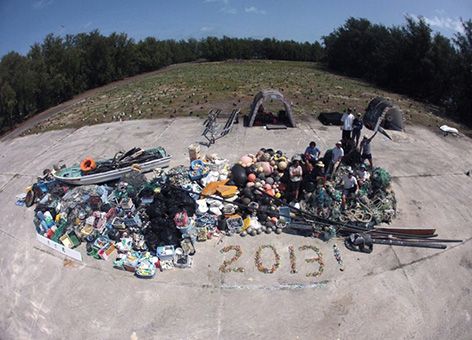Our Top 10 New Year's Resolutions for 2014
DECEMBER 31, 2013 -- With the end of 2013, many are reflecting on how the past year went. For NOAA's Office of Response and Restoration, we think we handled things pretty well, despite seeing some unusual challenges come our way (e.g., grounded drilling rig, molasses spill, 70 foot stranded dock). After all, being prepared—and preparing others—for the worst is a major focus in our work.
Despite our many accomplishments of the last year, however, we know that we should always be striving to improve how we respond to oil and chemical spills, assess and restore damaged ecosystems, and reduce the threat of marine debris.
So, without further ado, here are our top 10 resolutions for 2014:
- Lose "wait." That is, we're increasing our capacity to process damage assessment cases and get dollars for restoration out the door more quickly.
- Get more mobile. We're making several of our websites friendlier for mobile devices. In particular, stay tuned to response.restoration.noaa.gov and incidentnews.noaa.gov.
- Make more friends. We're now on Facebook and Twitter, so don't be shy about following us for the latest news and updates.
- Stay trendy. As trends change in what petroleum products America is importing and exporting, we're working with the University of Washington to explore how this will affect our readiness to respond to the oil spills of tomorrow.
- Quit littering. Or rather, get others to quit littering. We're always dreaming up better ways to change people's behavior so that everyone's trash, including plastics, stays out of our oceans.
- Get our ducks in a row. When Hurricane Sandy came racing toward the East Coast, it was bringing wind and waves that would literally reshape the shoreline. As a result, we're updating our northeast Environmental Sensitivity Maps to reflect changes caused by the storm and to add information that would enhance the value of these geographic summaries of vulnerable coastal resources when another disaster strikes.
- Help others. We're partnering with states impacted by Sandy to assess and remove marine debris from the storm, so that means getting funding out fast to those who need it.
- Update our look. This spring, we'll be releasing a major update to our mapping program MARPLOT, which allows emergency responders such as firefighters to create, customize, and download maps for offline use. Users will see very high-quality base (background) maps, including the familiar sight of Google maps.
- Listen more. We'll be looking forward to hearing your thoughts on restoration plans and projects around the country, starting with Deepwater Horizon public meetings across the Gulf of Mexico in January.
- Release a new GNOME. In 2014, we'll be releasing GNOME 2, our next generation oil spill modeling system. GNOME 2 will offer a Web-based system for forecasting the path of spilled oil in pre-designated locations in the U.S., include better 3-D modeling support, and integrate our oil weathering model, ADIOS.
Thanks for helping us make 2013 a great year. We look forward to even more in 2014!
 An official website of the United States government.
An official website of the United States government. 
